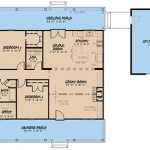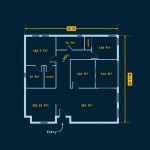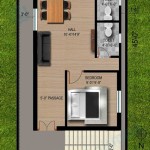Where Can I Find Drainage Plans For My House Gold Coast Queensland
Locating drainage plans for a property on the Gold Coast, Queensland, can be crucial for renovations, extensions, or understanding existing water flow. Accessing these plans requires navigating various resources and understanding the relevant authorities.
Key Starting Points for Your Search
- Your Property's Title Documents
- Previous Owners or Builders
- The Property's Conveyancer or Solicitor
Often, the first place to check is the property's title documents. While these documents might not always include detailed drainage plans, they can sometimes reference easements or other restrictions related to drainage. If the property is relatively new, contacting previous owners or the builder may yield results, as they might have retained copies of the plans. Similarly, the conveyancer or solicitor involved in the property's purchase might also have access to these records.
Accessing Plans Through Government Agencies
- Gold Coast City Council
- Queensland State Archives
The primary source for official drainage plans is typically the Gold Coast City Council. Their website often provides online portals or contact information for accessing property records, including drainage information. Submitting a formal request, which may incur a fee, might be necessary. Older properties may require delving into historical archives. The Queensland State Archives hold extensive records, potentially including older council documents and development plans that contain drainage details.
Utilizing Private Sector Resources
- Dial Before You Dig
- Licensed Surveyors and Plumbing Professionals
Before undertaking any excavation work, contacting 'Dial Before You Dig' is essential. This free service identifies underground utilities, including drainage pipes, to prevent accidental damage. While not providing detailed plans, it offers crucial information about existing infrastructure locations. For more comprehensive information, engaging a licensed surveyor or plumbing professional can be valuable. Surveyors can conduct detailed site surveys to locate and map existing drainage systems, while plumbers often possess knowledge of local regulations and drainage designs.
Understanding Drainage Plans and Diagrams
- Easements and Restrictions
- Pipe Materials and Sizes
- Connection Points and Flow Direction
Drainage plans are typically technical drawings that depict the layout of the drainage system on a property. They indicate the location of pipes, drains, and other drainage infrastructure. Understanding these plans requires recognizing standard symbols and terminology. Key elements to look for include easements, which specify areas where others may have rights related to drainage, and restrictions that dictate what can be built or done on the property in relation to drainage. The plans also specify pipe materials, sizes, and connection points, along with the direction of water flow. This information is crucial for any construction or landscaping project that might impact the existing drainage system.
Navigating Challenges and Seeking Professional Advice
- Incomplete or Missing Records
- Interpreting Complex Diagrams
- Consulting with Engineers or Drainage Specialists
Sometimes, locating complete drainage plans can be challenging. Records may be incomplete, missing, or difficult to interpret. Older properties, in particular, may present significant difficulties due to changes in ownership and record-keeping practices. If the diagrams are complex or the information unclear, seeking professional advice is recommended. Consulting with a civil engineer or drainage specialist can provide expert interpretation of the plans and guidance on compliance with current regulations. They can also assist with designing new drainage systems or modifying existing ones to meet specific needs.
Importance of Accurate Drainage Information
- Preventing Water Damage
- Complying with Building Regulations
- Avoiding Legal Disputes
Accurate drainage information is paramount for preventing water damage to the property and surrounding areas. Improper drainage can lead to flooding, erosion, and structural damage. Understanding the existing drainage system is also essential for complying with building regulations and ensuring any modifications or additions adhere to local codes. This helps avoid legal disputes and ensures the long-term integrity of the property and its drainage system.
Further Resources for Information
- Queensland Building and Construction Commission (QBCC)
- Master Plumbers’ Association of Queensland (MPAQ)
Additional information and resources can be found through the Queensland Building and Construction Commission (QBCC) which provides information on building codes and regulations related to drainage. The Master Plumbers’ Association of Queensland (MPAQ) can provide access to qualified plumbing professionals and up-to-date information on best practices for drainage systems.

Drainage Solutions Gold Coast

Stormwater Drainage Contractors Plumbing Solutions Gold Coast Free Quotes

Gold Coast Sewer Blockages Who S Responsible Paying

How To Find The Sewer Line On Your Property Steps Pictures And Where It Pipe Relining Company

Stormwater Pipe Locator 6 Ways To Find Your Pipes

Plumbing And Drainage Plan Search Request Form

Stormwater Pit Installations How They Work Gold Coast Tweed Heads

Outdoor Drainage Options For Rainwater Harvesting Gold Coast Plumbing Experts

Gold Coast Patio Drainage

Detailed Infrastructure Plans
Related Posts








